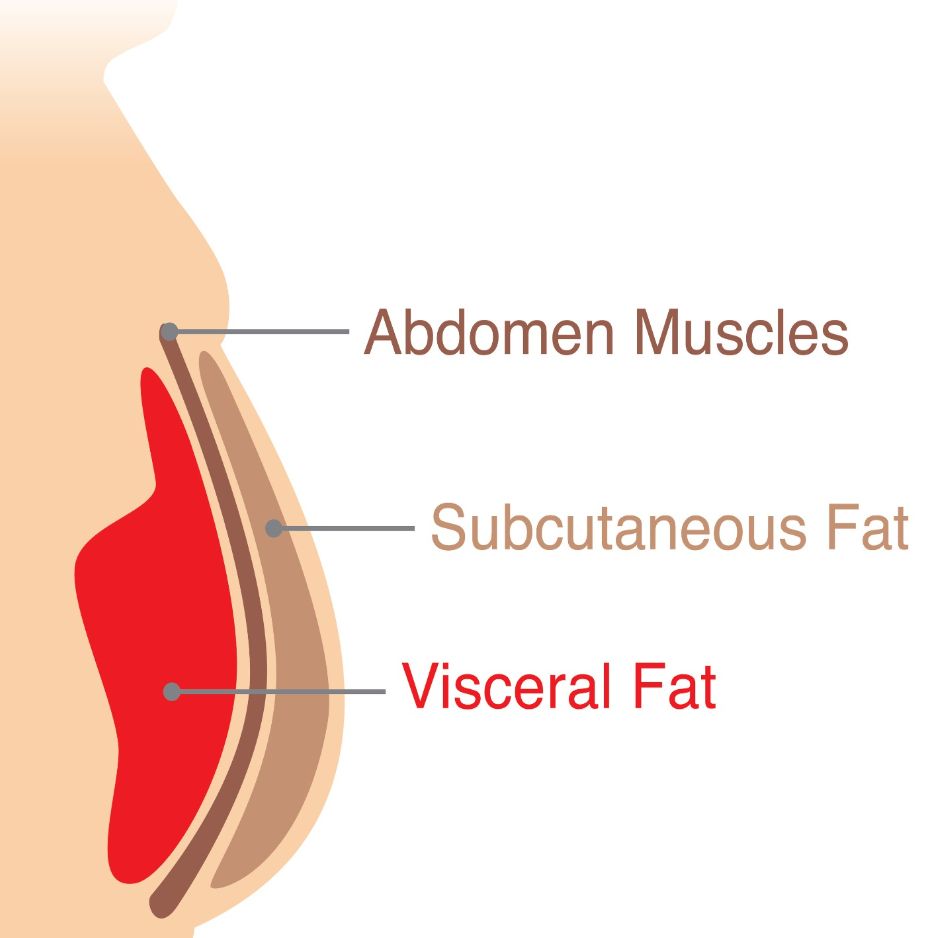Ozempic Alternatives: Complete 2025 Guide

Ozempic Alternatives: A Complete 2025 Guide
Looking for Ozempic alternatives because of cost, shortages, side effects, or needles? Here’s the short answer.
• Best overall for weight loss (weekly shot): Zepbound (tirzepatide) — averages ~20% loss at 72 weeks and beat semaglutide 2.4 mg in a head-to-head trial (head-to-head obesity trial results).
• Best non-injection GLP-1 option (pill): Rybelsus (oral semaglutide) — improves A1C and yields modest weight loss in T2D; not FDA-approved for weight loss (PIONEER-4 randomized trial).
• Lower-cost oral meds (non-GLP-1): Phentermine/topiramate, naltrexone/bupropion, and orlistat — typically 5–12% average loss in trials, each with different side-effect profiles (NIDDK prescription medications overview).
• Avoid unapproved or counterfeit compounded versions of semaglutide or tirzepatide. Stick to FDA-approved, pharmacy-dispensed medications (Obesity Medicine Association overview).
• Want to avoid drugs or can’t take GLP-1s? Jump to the Lifestyle Alternatives section for practical, evidence-based strategies.
BodySpec tip: Whatever you choose, track the right weight. A DEXA scan tells you if you’re losing fat (including visceral fat) while protecting muscle. See how DEXA measures visceral fat and why body composition beats scale weight.
At-a-Glance Comparison Table
| Alternative | Drug class & FDA-approved use | Delivery | Typical weight loss in trials | Notable perks | Common side effects | Notes on cost/coverage |
|---|---|---|---|---|---|---|
| Zepbound (tirzepatide) | Dual GIP/GLP-1; FDA-approved for chronic weight management | Weekly injection | ~16–21% mean loss at 72 wks; up to ~23% at highest dose (SURMOUNT-1 trial; head-to-head obesity trial) | Strongest efficacy among approved meds | Nausea, diarrhea, constipation | List/cash prices vary; manufacturer savings may apply |
| Wegovy (semaglutide 2.4 mg) | GLP-1; FDA-approved for chronic weight management | Weekly injection | ~15% mean loss at 68 wks (STEP-1 primary results) | CV risk reduction in adults with obesity + CVD on label | Nausea, vomiting, diarrhea; delayed gastric emptying warning (Wegovy prescribing information) | Coverage varies; cash promos change |
| Rybelsus (oral semaglutide) | GLP-1; FDA-approved for T2D (not weight loss) | Daily pill | ~4.4 kg loss at 26 wks in T2D vs −3.1 kg with liraglutide and −0.5 kg with placebo (PIONEER-4 randomized trial) | Oral option for needle-averse users | GI symptoms (nausea) | Coverage differs; no weight-loss indication |
| Saxenda (liraglutide 3.0 mg) | GLP-1; FDA-approved for weight management | Daily injection | ~5–10% average | Long track record | Nausea, vomiting | Coverage varies |
| Other T2D GLP-1s (Trulicity, Victoza) | GLP-1s; FDA-approved for T2D | Weekly/daily injection | Modest weight loss vs obesity-specific doses (class overview) | Glycemic/CV benefits (drug-specific) | GI | Often covered for T2D, not obesity |
| Phentermine/topiramate (Qsymia) | Combination; FDA-approved | Daily capsule | ~8–12% mean; up to ~14% at higher dose (efficacy and safety review) | Strong efficacy among non-incretins; oral | Paresthesias, dry mouth, insomnia; teratogenic | Often lower cash cost vs GLP-1s |
| Naltrexone/bupropion (Contrave) | Combination; FDA-approved | Daily tablets | ~5–9% mean with lifestyle support (clinical efficacy review) | Helpful for cravings | Nausea, constipation; avoid with chronic opioids; seizure risk | Mid-range cost |
| Orlistat (Xenical/Alli) | Lipase inhibitor; FDA-approved (OTC dose = Alli) | With meals | Additional ~3–4% over diet long-term (two-year randomized trial) | Non-systemic | Oily stools, urgency | Lower cost; OTC option (Alli) |
| Metformin | Insulin sensitizer; T2D/PCOS | Daily pill | Modest (~1–3 kg) (NIDDK prescription medications overview) | Inexpensive; metabolic benefits | GI upset | Off-label for weight loss |
| SGLT-2 inhibitors (e.g., empagliflozin) | T2D; CV/renal benefits | Daily pill | ~2–3 kg average; more with combos (SGLT-2 weight-loss review) | Cardio-renal benefits in T2D | Genital infections | Often covered in T2D |
| DPP-4 inhibitors (e.g., sitagliptin) | T2D; weight-neutral | Daily pill | Weight-neutral; for glycemic control, not weight loss (DPP-4 inhibitor overview) | Well-tolerated | Nasopharyngitis, headache (class-typical) | Typically covered for T2D; not for weight loss |
Self-pay promotions and savings programs for semaglutide and similar meds exist, but details change. Check reputable pricing resources for current offers (GoodRx Ozempic page).
How to pick the best Ozempic alternative (easy 3-step guide)
-
Start with your goals and medical history
• What’s primary: A1C control, weight loss, or both?
• Health context matters: diabetes, cardiovascular/kidney disease, pregnancy plans, gastroparesis, seizure history, chronic opioid use, prior pancreatitis, or personal/family history of medullary thyroid carcinoma (MTC)/MEN 2 (check labels and talk to your clinician). -
Choose your delivery style and tolerance

• Injections (weekly/daily) deliver the strongest average losses (Zepbound, Wegovy).
• Prefer a pill? Options include Rybelsus, phentermine/topiramate, naltrexone/bupropion, SGLT-2s, metformin, orlistat.
• Managing GI side effects: GI symptoms are common early on. Ask about slow titration and other mitigation tips; follow label guidance.
• Before procedures: GLP-1s can delay stomach emptying. New multi-society guidance says most patients can continue; higher-risk patients may need a 24-hour liquid diet and a plan with their care team (multi-society GLP-1 peri-procedure guidance; also see the Wegovy prescribing information).
- Match the budget

• Check your plan’s formulary and manufacturer programs. Cash prices vary widely and promos are time-limited (GoodRx snapshot). For broader tactics, see our guide to lowering prescription costs.
Deep dive: Leading prescription alternatives
1) Tirzepatide (Zepbound/Mounjaro)

- What it is: A dual GIP/GLP-1 agonist; weekly injection. Zepbound is FDA-approved for chronic weight management.
- Effectiveness: ~20% average loss at higher doses over 72 weeks; superior to semaglutide 2.4 mg on weight loss in a head-to-head trial (SURMOUNT-1 randomized trial; head-to-head obesity trial).
- For type 2 diabetes: Outperformed semaglutide 1 mg on A1C and weight in SURPASS-2 (SURPASS-2 trial results).
- Side effects: Mostly GI; dose-dependent (SURMOUNT-1 randomized trial).
- Learn more: Mounjaro vs. Ozempic and Zepbound results overview.
2) Wegovy (Semaglutide 2.4 mg)
- What it is: A GLP-1 receptor agonist; weekly injection that’s FDA-approved specifically for chronic weight management.
- Effectiveness: ~15% average loss at 68 weeks with lifestyle support (STEP-1 primary results); the Wegovy label also carries a CV risk-reduction indication for adults with obesity and established CVD (Wegovy prescribing information).
- Side effects: GI symptoms; delayed gastric emptying matters for anesthesia planning (multi-society GLP-1 peri-procedure guidance; Wegovy prescribing information).
- Key consideration: Protect muscle while you lose fat — Ozempic muscle-loss prevention.
3) Oral semaglutide (Rybelsus)
- What it is: A daily oral GLP-1 approved for type 2 diabetes (not a weight-loss indication).
- Evidence: Non-inferior to liraglutide for A1C and greater weight loss vs liraglutide/placebo at 26 weeks in PIONEER-4 (PIONEER-4 randomized trial).
- Considerations: Helpful if you strongly prefer pills; cost and coverage vary. Deep dive: Rybelsus clinical data overview.
4) Phentermine/topiramate (Qsymia)
- What it is: An oral combination medication for chronic weight management.
- Effectiveness: ~8–12% average loss; up to ~14% at higher dose (efficacy and safety review).
- Considerations: Monitor for paresthesias, dry mouth, insomnia; teratogenic — requires careful contraception and REMS program.
5) Naltrexone/bupropion (Contrave)
- What it is: An oral combination that targets appetite and cravings.
- Effectiveness: ~5–9% average loss with lifestyle support (clinical efficacy review).
- Considerations: Nausea and constipation are common; avoid with chronic opioid therapy; seizure risk with bupropion.
6) Orlistat (Xenical/Alli)
- What it is: A lipase inhibitor that blocks some fat absorption; available Rx and OTC.
- Effectiveness: Adds ~3–4% over diet at 1–2 years (two-year randomized trial).
- Considerations: GI side effects (oily stools/urgency) are common; take fat-soluble vitamin supplementation if used long-term.
7) SGLT-2 inhibitors (e.g., empagliflozin)
- What they are: Diabetes medications that increase urinary glucose excretion.
- Effectiveness: ~1.5–3 kg average weight loss; more when paired with other agents (SGLT-2 weight-loss review).
- Considerations: Cardio-renal benefits in T2D; genital infection risk; hydration matters.
8) DPP-4 inhibitors (e.g., sitagliptin)
- What they are: Diabetes medications that prolong endogenous incretin activity.
- Weight effect: Generally weight-neutral; used for glycemic control rather than weight loss (DPP-4 inhibitor overview).
- Considerations: Modest glycemic effects vs GLP-1s; well-tolerated profile.
9) Metformin
- What it is: A low-cost insulin sensitizer used in T2D/PCOS.
- Weight effect: Modest (~1–3 kg) (NIDDK prescription medications overview).
- Considerations: GI upset common early; long safety record; often first-line for T2D.
Lifestyle Alternatives (non-drug options that work)

- Aim for 25–35 g of fiber per day: Higher fiber intake predicts greater weight loss and better adherence in calorie-restricted diets (POUNDS Lost re-analysis).
- Protein pacing: Distribute protein (e.g., 25–35 g) across 3–4 meals to protect muscle while in a calorie deficit; combine with resistance training for best results (see our muscle vs. fat guide).
- Prioritize resistance training 2–4x/week: Preserve lean mass and metabolic rate; simple full-body routines work for beginners (start here: strength training for beginners).
- Add short walks after meals: Even brief post-meal walks can blunt glucose spikes; a randomized crossover study in type 2 diabetes showed 30 minutes of faster walking one hour after lunch lowered postprandial glucose (randomized crossover study in T2D).
- Sleep 7–9 hours: Short sleep shifts appetite-regulating hormones (↓ leptin, ↑ ghrelin) and increases hunger for calorie-dense foods (Annals of Internal Medicine trial).
- Simple calorie framework: Use a modest deficit (e.g., 300–500 kcal/day) paired with high-fiber, high-protein foods to maintain energy and satiety.
Emerging pipeline to watch

- Retatrutide (triple G agonist): ~24% mean loss at 48 wks in Phase 2 (retatrutide Phase 2 results).
- Orforglipron (oral small-molecule GLP-1): Once-daily pill in Phase 3 with significant A1C and weight reductions in earlier studies — see our orforglipron explainer.
- CagriSema (cagrilintide + semaglutide): Phase 3 readouts pending.
- Natural peptide BRP (pre-clinical): A Stanford team identified a brain-acting peptide that reduced food intake and weight gain in animals without causing nausea in those models; human trials are pending (Stanford Medicine research news).
FAQs
-
What’s the best Ozempic alternative for weight loss?
Tirzepatide (Zepbound) produced greater average weight loss than semaglutide 2.4 mg in a head-to-head trial (head-to-head obesity trial results). -
What’s the most affordable option?
Oral non-incretin meds (orlistat, phentermine/topiramate, naltrexone/bupropion) are often cheaper than GLP-1s, but effectiveness and side effects differ (NIDDK prescription medications overview). For current GLP-1 promos, check reputable savings programs (GoodRx Ozempic page). -
Is there an oral alternative to Ozempic?
Yes — Rybelsus (oral semaglutide) shows A1C and weight benefits in T2D (PIONEER-4 randomized trial). It’s not FDA-approved for weight loss. Non-incretin orals include phentermine/topiramate and naltrexone/bupropion. -
Are GLP-1s safe if I need surgery?
Most can continue with precautions; higher-risk patients may need a liquid diet 24 hours before. Confirm a plan with your care team (multi-society GLP-1 peri-procedure guidance). -
How do I avoid losing muscle on any plan?
Prioritize protein, lift 2–3x/week, and monitor lean mass with DEXA. Start with our Ozempic muscle-loss prevention guide.
Using Body Composition to Track Your Progress
Your scale can’t tell fat from muscle — DEXA can. Regular BodySpec scans make your plan smarter and safer:
- See what changed (clearly): DEXA splits your weight into fat, lean mass, and bone — plus regional fat and visceral fat. You’ll know if the pounds you lost were mostly fat.
- Protect your muscle: If a scan shows lean mass slipping, you can bump protein, tweak training, or talk to your clinician about titration speed.
- Catch plateaus early: If the scale stalls, DEXA reveals whether it’s water shifts, muscle gain, or a real fat-loss slowdown.
- Set the right cadence: Most people rescan every 8–12 weeks during active weight loss. That timing pairs well with medication dose reviews.
Ready to make your progress data-driven? Book your BodySpec DEXA scan — fast appointment finder, immediate results.
Disclaimer: This guide is for educational purposes only and is not medical advice. Always consult your licensed healthcare professional to determine the safest and most effective option for you, especially if you have medical conditions, take other medications, or are pregnant or planning pregnancy.


